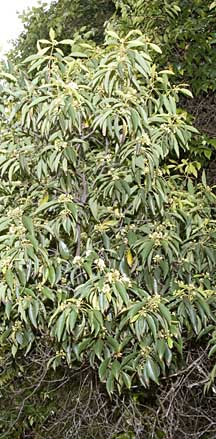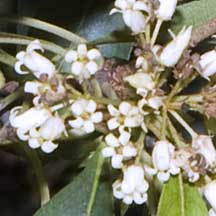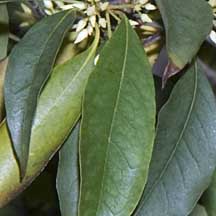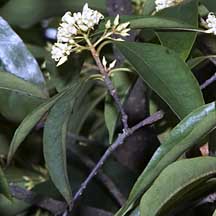 |
|
|
plants
text index | photo
index
|
| coastal plants |
| Belalang
puak Pittosporum ferrugineum Family Pittosporaceae updated Feb 11 Where seen? According to Hsuan Keng it was often seen along seashores, including at Kranji, Changi and Seletar. According to Corners, it was common on rocky and sandy shores and in sandy scrub in Malaya. As well as behind mangroves and in some places may even occur far inland. Features: Corners describes it as "an insignificant little tree unless its branches are weighed with fruit". It is distinguished by narrow leaves with wavy edges and young parts which are hairy brown. A shrub or small tree (seldom exceeding 10m). Leaves small, narrow pointed at both ends, the leaf edge very wavy. The leaves appear in clusters along slender twigs. Young leaves pale green, withering yellow. Flowers yellowish white in clusters, with faintly honey-sweet scent. Fruit in compact clusters of 4-12 at the tips of twigs, ripening orange ochre and tipped with a pin-like style. When ripened, splits to reveal scarlet mass of pulpy seeds. Seeds pale yellow, hard with thin red sticky pulp. Burkill says the fruit tastes sweetish but "would doubtless be dangerous to eat". Human uses: According to Burkill, the leaves and roots are used in poulticing for malaria. The leaves and fruit are also used as fish poison. Status and threats: This tree is listed as 'Vulnerable' in the Red List of threatened plants of Singapore. |
 Growing also the natural shore Lazarus Island, Feb 11 |
 Lazarus Island, Feb 11 |
 Lazarus Island, Feb 11 |
 Lazarus Island, Feb 11 |
|
Acknowledgements References
|
|
|